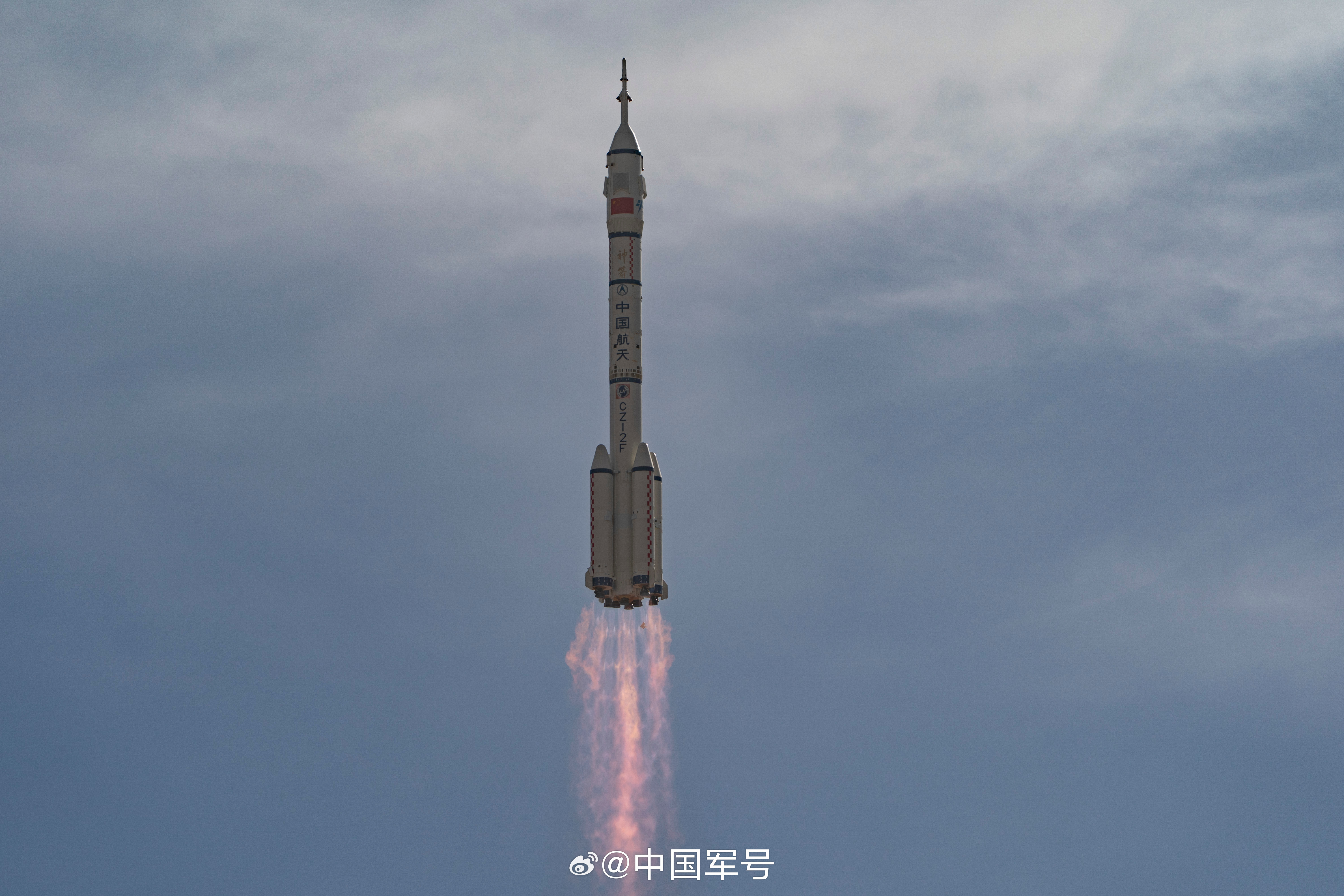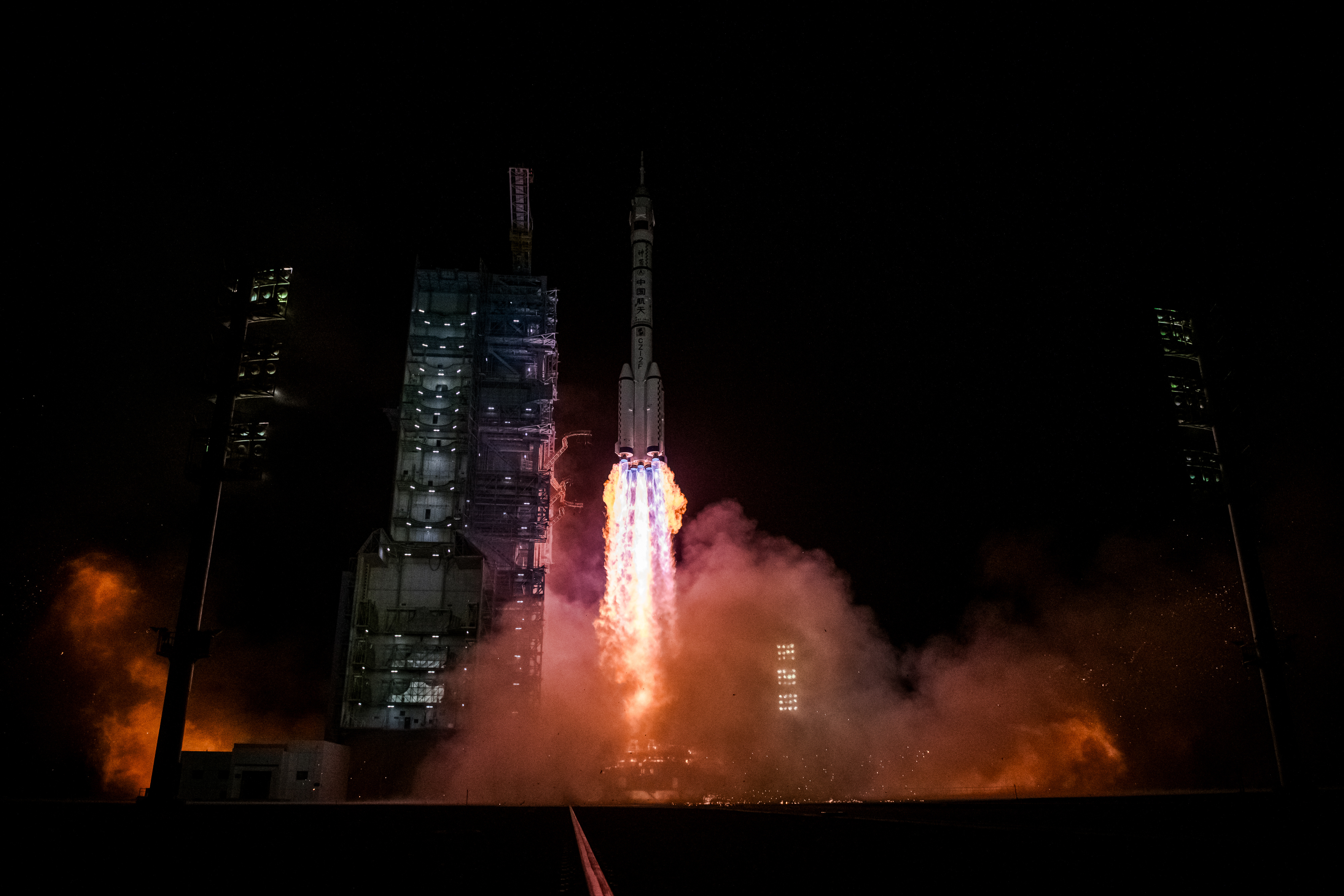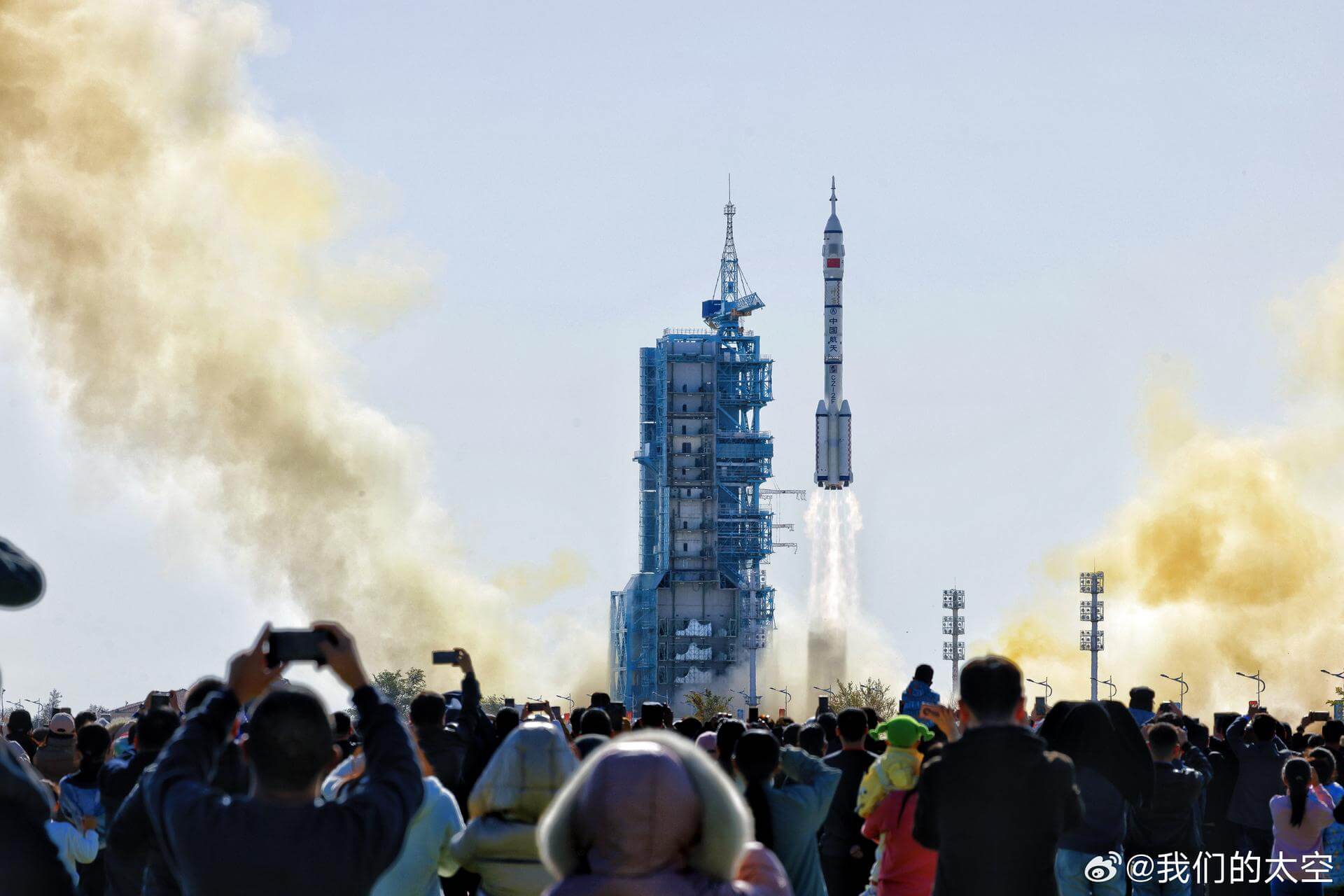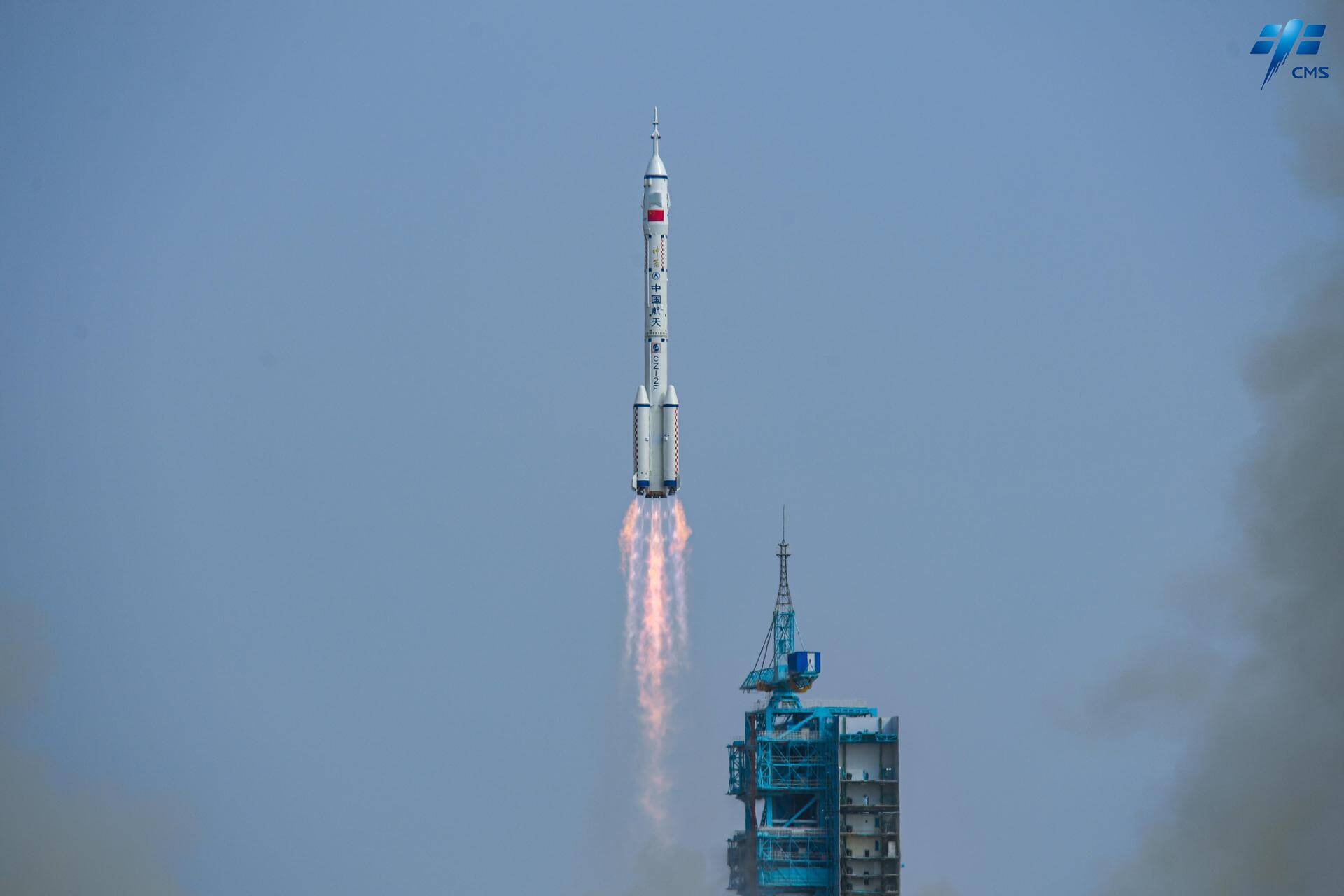
Long March 2F/G
ActiveChina Aerospace Science and Technology Corporation (CASC)
Oct. 31, 2011
Description
The Long March 2F is a Chinese orbital carrier rocket, part of the Long March 2 rocket family. Designed to launch the crewed Shenzhou spacecraft, the Long March 2F is a human-rated two-stage version of the Long March 2E rocket, which in turn was based on the Long March 2C launch vehicle. It is launched from complex SLS at the Jiuquan Satellite Launch Center. The Long March 2F/G version includes longer boosters for increased lift capability, among other improvements.
Specifications
-
Stages
2 -
Length
62.0 m -
Diameter
3.35 m -
Fairing Diameter
― -
Launch Mass
464.0 T -
Thrust
―
Family
-
Name
Long March 2F/G -
Family
― -
Variant
F/G -
Alias
― -
Full Name
Long March 2F/G
Payload Capacity
-
Launch Cost
― -
Low Earth Orbit
8399.0 kg -
Geostationary Transfer
Orbit
― -
Direct Geostationary
― -
Sun-Synchronous Capacity
―
China Aerospace Science and Technology Corporation
Government
Chairman & President: Lei Fanpei
CASC 1999The China Aerospace Science and Technology Corporation (CASC) is the main contractor for the Chinese space program. It is state-owned and has a number of subordinate entities which design, develop and manufacture a range of spacecraft, launch vehicles, strategic and tactical missile systems, and ground equipment. It was officially established in July 1999 as part of a Chinese government reform drive, having previously been one part of the former China Aerospace Corporation. Various incarnations of the program date back to 1956.
Long March 2F/G | Shenzhou 22
China Aerospace Science and Technology Corporation | ChinaJiuquan Satellite Launch Center, People's Republic of China
Nov. 25, 2025, 4:11 a.m.
Status: Launch Successful
Mission:
Shenzhou 22 (Chinese: 神舟二十二号) will be the 22nd flight of the Shenzhou program. The spacecraft will be launched without crew to replace Shenzhou 20 that was damaged by orbital debris on the descent module porthole window, and thus deemed unsuitable for crew re-entry. The spacecraft will later return three Chinese astronauts on the 10th flight to the Chinese Space Station back to Earth, after launching on Shenzhou 21.
Low Earth OrbitLong March 2F/G | Shenzhou 21
China Aerospace Science and Technology Corporation | ChinaJiuquan Satellite Launch Center, People's Republic of China
Oct. 31, 2025, 3:44 p.m.
Long March 2F/G | Shenzhou 20
China Aerospace Science and Technology Corporation | ChinaJiuquan Satellite Launch Center, People's Republic of China
April 24, 2025, 9:17 a.m.
Status: Launch Successful
Mission:
Ninth crewed flight to the Chinese space station. Due to damage sustained by the spacecraft's descent module porthole window by orbital debris collision found in early November 2025, the spacecraft was deemed unsuitable for crew return. Shenzhou 22 was launched without crew as replacement, and Shenzhou 20 will return to Earth without crew after EVA inspection by the onboard crew.
Low Earth OrbitLong March 2F/G | Shenzhou 19
China Aerospace Science and Technology Corporation | ChinaJiuquan Satellite Launch Center, People's Republic of China
Oct. 29, 2024, 8:27 p.m.
Long March 2F/G | Shenzhou 18
China Aerospace Science and Technology Corporation | ChinaJiuquan Satellite Launch Center, People's Republic of China
April 25, 2024, 12:59 p.m.
Long March 2F/G | Chinese Reusable Space Vehicle
China Aerospace Science and Technology Corporation | ChinaJiuquan Satellite Launch Center, People's Republic of China
Dec. 14, 2023, 2:12 p.m.
Long March 2F/G | Shenzhou 17
China Aerospace Science and Technology Corporation | ChinaJiuquan Satellite Launch Center, People's Republic of China
Oct. 26, 2023, 3:14 a.m.
Long March 2F/G | Shenzhou 16
China Aerospace Science and Technology Corporation | ChinaJiuquan Satellite Launch Center, People's Republic of China
May 30, 2023, 1:31 a.m.
Long March 2F/G | Shenzhou 15
China Aerospace Science and Technology Corporation | ChinaJiuquan Satellite Launch Center, People's Republic of China
Nov. 29, 2022, 3:08 p.m.
Long March 2F/G | Chinese Reusable Space Vehicle
China Aerospace Science and Technology Corporation | ChinaJiuquan Satellite Launch Center, People's Republic of China
Aug. 4, 2022, 4 p.m.
Long March 2F/G | Shenzhou 14
China Aerospace Science and Technology Corporation | ChinaJiuquan Satellite Launch Center, People's Republic of China
June 5, 2022, 2:44 a.m.
Long March 2F/G | Shenzhou 13
China Aerospace Science and Technology Corporation | ChinaJiuquan Satellite Launch Center, People's Republic of China
Oct. 15, 2021, 4:23 p.m.
Status: Launch Successful
Mission:
Second crewed flight to the Chinese Tiangong space station carrying Zhai Zhigang, commander, Wang Yaping and Ye Guangfu, operators, on their second, second and first spaceflight respectively. Their mission duration onboard the TSS is 6 months, the longest so far in Chinese spaceflight.
Low Earth OrbitLong March 2F/G | Shenzhou 12
China Aerospace Science and Technology Corporation | ChinaJiuquan Satellite Launch Center, People's Republic of China
June 17, 2021, 1:22 a.m.
Long March 2F/G | Chinese Reusable Space Vehicle
China Aerospace Science and Technology Corporation | ChinaJiuquan Satellite Launch Center, People's Republic of China
Sept. 4, 2020, 7:30 a.m.
Status: Launch Successful
Mission:
The payload is an experimental reusable spacecraft. It is rumored to be a prototype of a reusable spaceplane (similar to Boeing X-37B vehicle). The spacecraft stayed in orbit for two days and returned to Earth on September 6. Though the landing site was not disclosed, the spacecraft is presumed to have landed at an airbase near Lop Nor nuclear test site.
Low Earth OrbitLong March 2F/G | Shenzhou-11
China Aerospace Science and Technology Corporation | ChinaJiuquan Satellite Launch Center, People's Republic of China
Oct. 16, 2016, 11:30 p.m.
Status: Launch Successful
Mission:
This is the sixth crewed mission for China's Shenzhou program. Shenzhou-11 will carry two taikonauts, Jing Haipeng and Chen Dong, to the Tiangong-2 space station launched earlier in the year. The taikonauts will stay in Tiangong-2 for 30 days.
Low Earth OrbitLong March 2F/G | Tiangong-2
China Aerospace Science and Technology Corporation | ChinaJiuquan Satellite Launch Center, People's Republic of China
Sept. 15, 2016, 2:04 p.m.
Status: Launch Successful
Mission:
China's second space station, Tiangong-2 is tasked to verify key technologies such as cargo transportation, on-orbit propellant resupply, and a medium-term stay of astronauts. It will also carry an array of scientific experiments, and will be equipped with a robotic arm to help the assembly and maintenance of the station.
Low Earth OrbitLong March 2F/G | Shenzhou-10
China Aerospace Science and Technology Corporation | ChinaJiuquan Satellite Launch Center, People's Republic of China
June 11, 2013, 9:38 a.m.
Status: Launch Successful
Mission:
This isthe fifth crewed mission for China's Shenzhou program which lasted 15 days. Shenzhou-10 began its mission by bringing Nie Haisheng, Zhang Xiaoguang and Wang Yaping to the Tiangong-1 space station. During their 12-day stay at the station astronauts conducted space medicine and technological experiments, and Wang Yaping gave a lecture for over 60 million Chinese students. On 23 June undocked from the station and performed manual re-docking procedure, which was one of the objectives of the mission. On 25 June Shenzhou-10 undocked from the station and landed safely on the morning of the next day.
Low Earth OrbitLong March 2F/G | Shenzhou-9 & Shenzhou-9-GC
China Aerospace Science and Technology Corporation | ChinaJiuquan Satellite Launch Center, People's Republic of China
June 16, 2012, 10:37 a.m.
Status: Launch Successful
Mission:
This is the fourth crewed mission for China's Shenzhou program which lasted 12 days. Being the first crewed spacecraft to visit the Tiangong-1 space station, it brought up the astronauts Jing Haipeng, Liu Wang and the first Chinese female astronaut Lie Yang. They docked automatically to the station on 18 June. During their stay in the station, astronauts conducted various scientific and technological experiments, and performed manual re-docking on 24 June. Shenzhou 9 undocked on 29 June and landed safely back on Earth the same day.
Low Earth OrbitLong March 2F/G | Shenzhou-8 & Shenzhou-8-GC
China Aerospace Science and Technology Corporation | ChinaJiuquan Satellite Launch Center, People's Republic of China
Oct. 31, 2011, 9:58 p.m.
Status: Launch Successful
Mission:
This is the first docking mission for China's Shenzhou program. Being the first spacecraft to visit the Tiangong-1 space station, it was launched without crew to demonstrate spacecraft rendezvous and docking techniques. The spacecraft docked automatically to the station on 2 November 2011. A second undocking and re-docking to test accuracy and reliability of equipment and sensors in a bright environment was performed on 14 November 2011. Shenzhou 8 undocked on 17 November 2011 and landed safely back on Earth the same day.
Low Earth OrbitSoyuz 2.1a
Obzor-R No.1
43/4 (43R) - Plesetsk Cosmodrome, Russian FederationNote: Assignment of payloads to this launch is uncertain. The Russian Obzor-R satellite is a planned X-band radar earth observation satellite desi…
LVM-3 (GSLV Mk III)
BlueBird Block 2 #1
Satish Dhawan Space Centre Second Launch Pad - Satish Dhawan Space Centre, IndiaAST SpaceMobile’s Block 2 BlueBird satellites are designed to deliver up to 10 times the bandwidth capacity of the BlueBird Block 1 satellites, requi…
Long March 12A
Demo Flight
Long March 12A Pad - Jiuquan Satellite Launch Center, People's Republic of ChinaFirst test launch of CASC/SAST’s Long March 12A rocket, with a dummy payload. The rocket’s 1st stage attempted to land on a landing pad about 300 km …
HANBIT-Nano
Spaceward
HANBIT Pad - Alcântara Space Center, Federative Republic of BrazilMaiden orbital launch attempt for the South Korean start-up Innospace and its HANBIT-Nano small launch vehicle. Onboard this flight are five small sa…
H3-22
Michibiki 5 (QZS-5)
Yoshinobu Launch Complex LP-2 - Tanegashima Space Center, JapanQZSS (Quasi Zenith Satellite System) is a Japanese satellite navigation system operating from inclined, elliptical geosynchronous orbits to achieve o…




